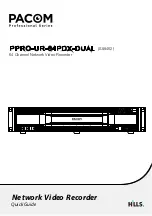Summary of Contents for 600
Page 1: ...Server Cards Reference Guide Release 5 3 1 September 2000 ...
Page 4: ...Model No Running Head ...
Page 10: ...vi Server Cards Model No Running Head Contents ...
Page 14: ...x Server Cards Model No Running Head Figures ...
Page 56: ...2 32 Server Cards Model No Running Head ACS FRS Server Card Specifications FRS Card ...
Page 74: ...3 18 Server Cards Model No Running Head ACS MCC Card Troubleshooting MCC Card ...
Page 110: ...4 36 Server Cards Model No Running Head ATM Server Card Specifications ATM Card ...
Page 150: ...5 40 Server Cards Model No Running Head ISDN PRI Card Troubleshooting ISDN PRI Card ...
Page 208: ...7 18 Server Cards Model No Running Head IMUX Card Troubleshooting IMUX Card ...



































